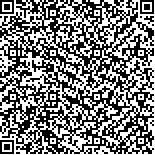本文已被:浏览 979次 下载 537次
Received:March 30, 2019 Published Online:December 23, 2019
Received:March 30, 2019 Published Online:December 23, 2019
中文摘要: 目的 研究2型糖尿病(T2DM)患者肠道菌群特征及其与胰岛素抵抗(IR)间的关系。方法 将2017年3月至2018年1月收治的46例T2DM患者纳为观察组,同时将50例同期行健康体检者纳为对照组,首先采集观察组与对照组粪便标本,调查42例T2DM患者肠道菌落特征,并比较两组患者血脂代谢及IR指数,分析肠道菌落失常与患者血脂紊乱及IR间的关系。结果 T2DM组柔嫩梭菌、肠球菌水平显著高于健康对照组[(5.78±1.12)logN/g vs (5.21±1.01)logN/g,(4.61±0.89)logN/g vs(4.23±0.87)logN/g,P<0.05],拟杆菌与大肠杆菌水平显著低于对照组[(6.64±1.07)logN/g vs(7.41±1.05)logN/g,(1.91±0.54)logN/g vs(2.18±0.55)logN/g,P<0.01,P<0.05],两组球形梭菌、乳酸杆菌、普氏菌及双歧杆菌水平无明显差异(P>0.05);两组血清总胆固醇(TC)、甘油三酯(TG)、高密度脂蛋白胆固醇(HDL-C)、低密度脂蛋白胆固醇(LDL-C)及IR指数间存在明显差异[(5.77±1.13)mmol/L vs (4.02±0.58)mmol/L,(3.41±0.67)mmol/L vs (1.36±0.35)mmol/L,(1.21±0.46)mmol/L vs(1.63±0.43)mmol/L,(3.59±0.89)mmol/L vs(1.89±0.51)mmol/L,(1.02±0.23)vs(3.68±1.01),P<0.05];经Pearson相关性分析得出,拟杆菌与IR指数呈负相关(r=-0.264,P<0.05),肠球杆菌与TG呈正相关,与HDL-C呈负相关(r=0.313,-0.247,P<0.05),柔嫩梭菌与HDL-C呈负相关,与IR指数呈正相关(r=-0.221,0.314,P<0.05)。结论 T2DM患者存在肠道菌落失常现象,肠道菌落失常可能通过影响患者血脂代谢加重其IR现象。
Abstract:Objective To study the characteristics of intestinal flora and their relationship with insulin resistance (IR) in patients with type 2 diabetes mellitus (T2DM). Methods Forty-six patients with T2DM from March 2017 to January 2018 were enrolled in observation group,and another 50 healthy examiners were enrolled in control group at the same time.The fecal samples of two groups were collected to investigate the characteristics of intestinal flora in 42 T2DM patients.The blood lipid metabolism and IR index were compared between two groups,and the correlations of intestinal flora disorder with dyslipidemia and IR were analyzed. Results The levels of clostridium leptum [(5.78±1.12) logN/g vs (5.21±1.01) logN/g] and enterococcus [(4.61±0.89) logN/g vs (4.23±0.87) logN/g] in T2DM group were statistically higher than those in control group (all P<0.05),and the levels of bacteroides [(6.64±1.07)logN/g vs (7.41±1.05)logN/g] and escherichia coli [(1.91±0.54)logN/g vs (2.18±0.55)logN/g] were significantly lower than those in control group(all P<0.05).There were no significant differences in the levels of spherobacillus,lactobacillus,plasmodium and bifidobacterium between two groups (all P>0.05).There were significant differences in the levels of TC [(5.77±1.13) mmol/Lvs (4.02±0.58) mmol/L],TG[(3.41±0.67)mmol/Lvs (1.36±0.35)mmol/L],HDL-C[(1.21±0.46)mmol/L vs (1.63±0.43)mmol/L],LDL-C [(3.59±0.89)mmol/L vs (1.89±0.51)mmol/L] and IR(1.02±0.23 vs 3.68±1.01) between two groups(all P<0.05).Pearson correlation analysis showed that bacteroides was negatively correlated with IR index (r=-0.264,P<0.05),and enterococcus was positively correlated with TG(r=0.313,P<0.05) and negatively correlated with HDL-C (r=-0.247,P<0.05),and clostridium leptum was negatively correlated with HDL-C(r=-0.221,P<0.05) and positively correlated with IR index (r=0.314,P<0.05). ConclusionIntestinal flora disorders occur in patients with T2DM.Intestinal flora disorders may aggravate the IR phenomenon by affecting blood lipid metabolism.
keywords: Type 2 diabetes mellitus Intestinal flora features Clostridium leptum Enterococcus Bacteroides Insulin resistance
文章编号: 中图分类号:R 587.1 文献标志码:B
基金项目:苏州市科技计划项目(SYS201603,SS201823)
引用文本:
